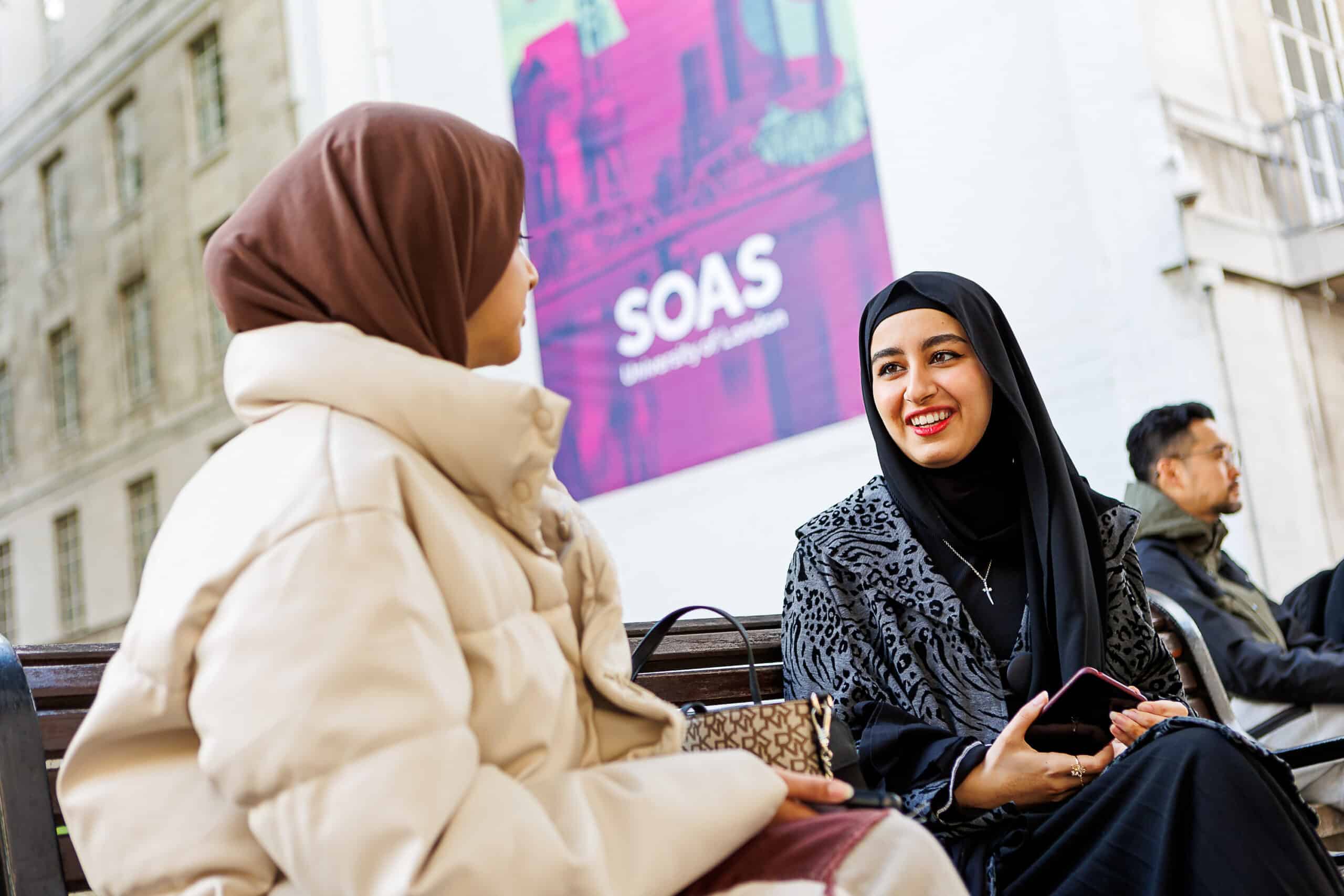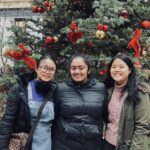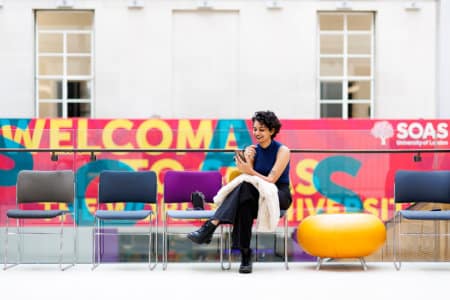As a natural mode of human expression, the arts have always been a defining characteristic of global society. From music to media, there is no one way of classifying how art should be made, showcased or celebrated. However, most studies on the arts tend to focus on its presence in Western cultures, placing less emphasis on its impact globally.
SOAS University of London takes a more inclusive approach. With a decolonial outlook on education, SOAS is committed to creating a more equal and just world in academia. Making this possible is a team of world-renowned scholars. They are not only specialists in various regions but the mentors who empower students here to challenge the global status quo and find solutions to the issues facing the world today.
“The focus on the global South as well as the attempt to decentralise the predominantly Western perspective in the world of arts is what attracted me to SOAS’s School of Arts at first,” says student Zoë Saebu.
This is an outlook that appeals to many students. Rey Yount aka Mantawoman, a MA Music in Development 2018 graduate remembers choosing SOAS for this reason. “The music department’s atmosphere welcomed perspectives like mine that lay beyond the western classical music canon,” she says. Its “radical and open-minded culture” was unmistakable.
The School of Arts focuses on the study and research of the visual and material arts, music and sound studies, curation, media industries and digital cultures of Asia, Africa and the Middle East. Alongside this are plenty of opportunities to gain exposure through exhibitions, collaborations and more — earning it the sixth place in the UK for employability.
Every aspect of the SOAS experience is designed to offer flexibility and support — and this begins with a knowledgeable faculty with industry experience. Many lecturers at SOAS have collaborated with musicians, museums, galleries, publishers and more. They’ve worked as curators at major museums and global music and film festivals as well.

Pursue the arts from a global lens. Source: SOAS University of London
A global approach to the arts
The MA History of Art and Archaeology lets students combine many interests without taking multiple MAs. From Islamic art to Southeast Asian Buddhist monuments, this programme looks into their specificity and the links between them, making for a more comprehensive understanding of art in various contexts and from a historical and contemporary standpoint.
“The broad programme lets you pick and mix in terms of regions, disciplines and material cultures — which is quite unique in terms of its multidisciplinary approach towards visual material,” says Saebu.
Students looking for a more specialised approach can choose regionally-focused programmes. Take the MA History of Art and Archaeology of East Asia, where they can study the arts of China, Japan and Korea. The MA History of Art and Architecture of the Islamic Middle East covers everything from Islamic Spain to the Arab countries and Central Asia. Then there’s the MA Curating Cultures — which examines the methods and approaches in curating the arts of Asia and Africa.
With the MA Music, Western music is not the focus of the curriculum — in fact, SOAS is the only institution that delves into the performing arts in certain regions such as South Sudan, Namibia and Pakistan. This approach has earned it the top spot in the UK for musical research impact.
Yount, now co-director of a music collective transcending the China-West divide, found in her MA Music “freedom to study in-depth methods and theories — namely applied ethnomusicology and autoethnography” which created structures to support her artistic inquiry.
Bridging everything together is the MA Global Creative and Cultural Industries, which looks into the history, theory and practices of the cultural economy. Modules encompass everything from the Global Film Industries to The Music Business, and may include an internship with an institution, organisation or enterprise involved in the creative and cultural industries.
The best part? Students can tap into the School of Arts’s wide realm of expertise at any time by choosing modules from different departments, curating a programme that is tailored to their interests and ambitions.

Learn from a faculty of experts with experience in museums, music and film festivals, publishers and more around the world. Source: SOAS University of London
An environment that sparks discovery
In between classes, students take advantage of being situated in the heart of London — visiting museums and art galleries, attending concerts, live gigs and more.
Of course, this opens doors to a wealth of opportunities. Aimee Dawson, who pursued an MA in the Department of History of Art and Archaeology, for example, worked on an exhibition titled “The Tent Makers of Islamic Cairo” in the Brunei Gallery. “The photographer on show, Dr. Massimiliano Fusari, was one of my lecturers and I assisted in editing the exhibition texts. I am now an editor so it was a very useful skill to have practised!” says Dawson. “Being in London in general was hugely important for my studies — it is the art centre of the UK and one of the most important art hubs in the world! The Brunei Gallery was also an excellent place to experience art and culture from the Global South.”
The skills she gained helped her land an internship at The Art Newspaper in London almost immediately after graduating. That internship is now a thriving career — Dawson’s been there for almost eight years now and is working her way up. “My boss at the time said she hired me because I came with a unique perspective from studying lesser-known art histories,” the graduate says. “My specialism in the Middle East made me stand out from other MA Art History students.”She credits her mentor, senior lecturer Dr. Simon O’Meara, for pushing her academically and supporting her applications for jobs even after she’s graduated. Today, she’s paying it forward. “Being invited back to give talks and seminars at SOAS has allowed me to meet lots of interesting people and also led to further work opportunities,” she says. “Being a guest lecturer at SOAS brings a lot of kudos!”.
Follow SOAS University of London on Facebook, Twitter, Instagram, LinkedIn, YouTube, Soundcloud, Weibo











